With meal replacement drinks like Soylent on the rise, I set out to find out whether they’re nutritionally adequate, carry any dangers and should replace eating entirely.
Imagine if you could save time with preparing meals. In fact, you save so much time that all you have to do is open a bottle and drink! Forget eating real food, make way for the new age of meal replacements. Ugh, I’m already NOT a fan. Now, we’re not talking about your grandma’s Ensure, we’re talking about new and improved trendy meal replacements targeted to young vibrant healthy adults. Through our research, we’ve already found a ton of brands out there, but the real question remains: Do these meal replacement drinks work and are they ACTUALLY good for us.
I began researching these drinks when I came across a headline about a trendy meal replacement drink known as Soylent being banned for sale in Canada. According to the CEO of Soylent, the Canadian Food Inspection Agency (CFIA) stated that their products did not meet the requirements to be called a meal replacement. The Canadian Food and Drugs Act (C.R.C., c 870) states clearly that a meal replacement is “a formulated food that, by itself, can replace one or more daily meals.” Within this act are specific guidelines all food manufacturers must follow in order to sell meal replacements. To save you from deciphering the regulations yourself, here’s a quick summary of what is considered a meal replacement beverage.
Calories
Must provide at least 225 calories per serving. Unfortunately, there is no one standard serving size, but CFIA states that a serving is an amount of food or drink that a person can reasonably drink in a single setting, such as a single-serving bottle. Sounds a little vague to me.
Protein
Protein must be between 15-40% of total calories. For example, if the meal replacement has 225 calories, then the meal replacement would have to have between 8.5 to 22.5 grams of protein.
Fat
Calories from fat cannot be greater than 35% of total calories. This includes all types of fats and even omega-3 and omega-6 fatty acids, which we know are considered essential since our bodies cannot make them.
Vitamins and Minerals
There are also specific requirements for vitamins and minerals, which can be found here. For example, there must be a minimum of vitamin D (50 IU), of calcium (200mg) since these are both important for bone health.
Replacing all meals
Another key point to keep in mind, is that if the meal replacement is intended to replace ALL daily meals, then there are more rigid guidelines:
- Calories from fat cannot be greater than 30% of total calories
- Calories from saturated fat cannot be greater than 10% of total calories
- There is a minimum amount of selenium (10 mcg), chromium (10 mcg), and molybdenum (20 mcg) required, which is not mandatory in meal replacements that aren’t intended to replace all daily meals
- There are no requirements for added fibre. I’m not sure why that was overlooked.
So, what the heck is Soylent anyway?
According their site, Soylent is a pioneer in the food technology sector that provides “healthy, functional foods that are good for the body and the planet.” They claim that their product helps to address challenges that the current food system faces, such as food accessibility, while also making eating easier for people. Soylent was basically founded because of the frustration of “living off a diet of frozen corn dogs and ramen” and the hassle of “purchasing, preparing, and consuming food that was neither healthy nor enjoyable.” So their solution? Let’s drink instead! Ugh.. insert eye roll here.
Soylent Products
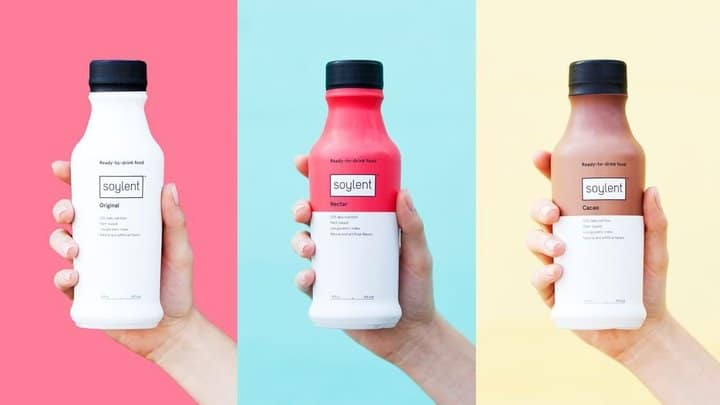
Soylent comes as a single-serving beverage or in a powder form that simply requires the addition of water. The beverage form comes in two types: “Soylent Drink and Soylent Caf”, or as they call it, “Breakfast in a bottle”, which contains added caffeine. I don’t know how I feel about having my breakfast and coffee in one gulp. The only difference between the two drinks is the 150 mg of caffeine added to the Soylent Caf drink. Both drinks contain 20% of your daily calories, 33% carbohydrates, 47% fat and 20% protein.
I don’t know if you noticed, but 47% fat is a lot of fat (typically it is recommended that 20-35% of our calories should come from fat), which makes this drink semi-ketogenic. I do have a few long term concerns with a ketogenic diet, and I share them in detail here.
Based on this nutrition information, you would have to consume 5 bottles per day to meet the average person’s nutritional needs (2000 calories per day). That’s pretty costly, given that they cost over $3/a bottle. If you were to drink five of these a day you’re looking at $15-20 a day. That definitely adds up.
At the end of the day, you choose how you spend your money. But I can guarantee that you’ll likely save a lot more money buying real food than relying on meal replacements on a daily basis. Just think if you’re trying to feed more than one person!
You’re probably also asking, what’s in these drinks exactly?
Check out this novel size nutrition facts table:

I don’t know if you hadn’t noticed, but the ingredient list for the original “Soylent Drink”, is hella long.
Granted, lengthy-lists aren’t a guarantee that a product is bad for you, but it is a good way to see what ingredients you’re consuming and if you’re better off sticking to a simpler item or recipe.
To make a product taste good, a lot of manufacturers will add sugar. While some sugar is fine, we want to be cautious of the amount of added sugar in the foods we eat. For each drink, you’re getting a little over 2 tablespoons of added sugar, which isn’t too bad.
Another thing that is important is the fibre content, which is 3 grams per bottle. If you were to drink these 5 times per day, you would get about 15 grams of fibre. Women need about 25 grams per day and men need about 38 grams per day. This means that the drinks alone would not allow you to meet your fibre needs. I really am a big believer that fibre makes the world of a difference in good health.
Another key piece of information the company has provided us with on the label is that this product is not intended to replace all meals. Bet a lot of buyers haven’t read that fine print.
I do have some concerns about the current CFIA regulations in terms of vitamin D, fibre, and calorie content. The minimum and maximum vitamin D content is rather low. Considering the average person needs at least 600 IU per day, and arguably more if you live in places like Canada, 50 to 100 IU per meal replacement would not provide you with your daily needs. While it is already hard to get enough vitamin D through food, and it’s not as accessible in the winter time via the sun, you would likely have to take a vitamin D supplement. As well, there are no requirements for added fibre which means if you solely rely on meal replacements, you may not be getting enough fibre to promote gut health and other health benefits. While it’s okay to use meal replacements occasionally, 225 calories are quite low to be called a meal replacement. Considering the average person needs about 2000 calories per day, this is well below the calories of a well-balanced meal and arguably would be more similar to a snack. So, it is rather concerning that a meal replacement can be this low in calories and be viewed by a consumer as a full meal, especially if they are replacing all their meals with these products.
Disordered Eating
In a cross-sectional study by Hartmann et al., the authors wanted to understand who was more likely to use meal replacements and why. The study found that those who reported using meal replacement products more often typically used these products to compensate for eating larger meals that they already ate or planned to eat. Interestingly, users of meal replacement drinks also had a higher tendency to believe that they did not have to improve their consumption of vegetables and fruit or increase their physical activity if they used the product. Or in other words, they viewed these products as an alternative to healthy eating habits and physical activity. YIKES! The results of the study also suggested that users of meal replacements may use these products to overcome feelings of “failure”, such as overeating, since they believe they can “do something about it”. The study also found that those with restrained eating tendencies, meaning that they restrict the food they eat, were more likely to use meal replacement products. This may be because of the limited thought involved in choosing what to eat and how much which can be stressful for people struggling with their relationship with food. Therefore, users feel they can consume these meal replacement drinks without fear of judgement and loss of self-control. These drinks also may take the pleasure out of eating, which allows the person to stick to their diet goals since it is no longer an enjoyable activity. However, the authors suggest that users of meal replacement drinks may be consuming these products in addition to their regular meals, therefore eating more than they originally intended to, which would then limit any weight loss success they were looking for. When I read research like this, I immediately become concerned with the disordered eating habits, such as orthorexia, that can stem from products or diets that promise to “fix” you or have a specific set of rules. Food doesn’t have to be feared.
When Do We Need Meal Replacement Drinks
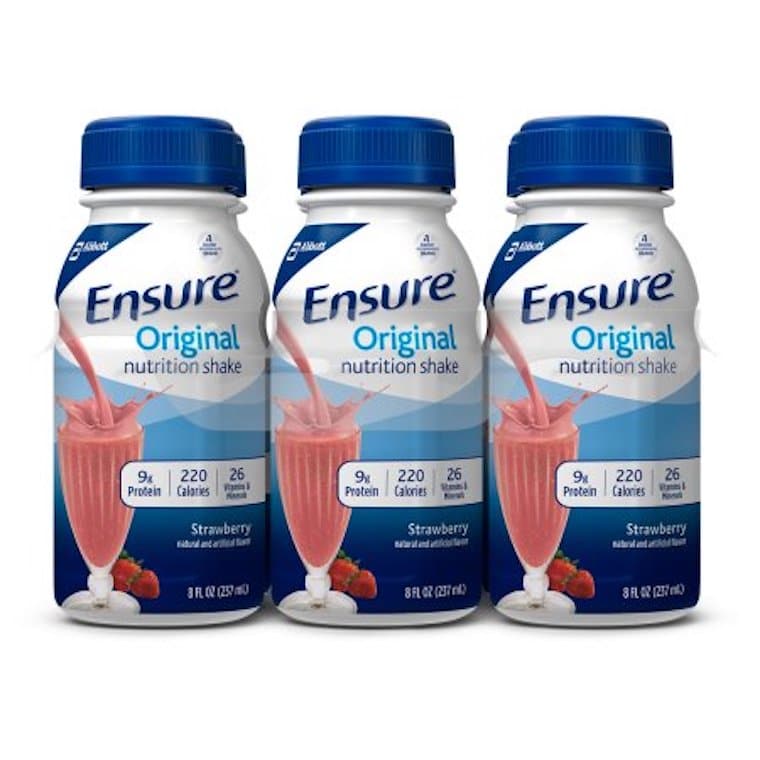
So, what is the purpose of meal replacements and can they fit into a person’s diet? Well, meal replacements are great when you’re in a rush and need some quick fuel. They are also commonly used by people that have trouble meeting their needs through food alone. For example, meal replacements are recommended for seniors that have difficulty eating meals throughout the day, whether it is because of a medical condition, low appetite, inability to prepare food, or they get full quickly. In this case, meal replacement drinks, such as Boost or Ensure, are used for maintaining weight or even gaining weight and are usually used under the advisement of a Registered Dietitian. Another reason for using meal replacements is surgery. If you have ever had your tonsils removed or another oral surgery, you’ll know that it can be quite difficult to eat for a few days. In this case, a meal replacement could help you get the energy your body needs without having to chew your food.
For the average person, however, meal replacement drinks (like Soylent or Shakeology or anything else) should not routinely replace real food and I’ve always shared with you guys my food first philosophy. Here’s why.
Benefits of Eating Whole Foods vs Meal Replacement Drinks
Gut Health
When we eat regular food, our stomach and intestines work hard to break food down into very small pieces so that we can absorb the nutrients. Now, it may seem logical that having the food already partially digested (like it would be in a meal replacement) would be a good thing, but it’s actually the opposite. Our gut goes by the motto “use it or lose it”. Think of digestion as exercise for the gut. This “exercise” stimulates the gut and actually creates an important part of the immune system called gut-associated lymphoid tissue, or GALT for short. Therefore, we want to keep our guts as active as possible.
Food Synergy
What does that mean? Well, it means that the various nutrients in food work together when we digest them. For example, there are two types of iron: heme and non-heme. Heme iron, found in animal products, is easily digested and absorbed when we eat it. Non-heme iron, found in plant products, isn’t absorbed as easily. Fortunately, vitamin C helps increase non-heme iron absorption. So, if you’re having spinach in a meal, try adding some red peppers to increase the iron absorption. This is just one of many examples in which different nutrients help each other out. If you rely on meal replacements, you may be missing out on this synergistic action.
Stay Full for Longer
Finally, eating real, whole food can help you feel fuller longer. When we eat food, our stomachs expand to hold the food and the food is slowly broken down in the stomach. Little by little, the food is then sent into the small intestine to be broken down further. This breakdown takes a while to do, which means the food is sitting in our stomach for a while. If we drink our food then the food easily and quickly leaves the stomach, meaning that our stomachs are empty and send off the signals to the brain that we are ready for more food. Thus, you may end up feeling HANRGY real quick. With food, this signal is delayed since our body is still working on the previous meal. Fibre also helps to keep us full as it takes longer to digest. Therefore, you may feel fuller longer and not need to eat as often. Plus, keeping things moving along is good for gut health!
Benefits of Cooking
Stay in Control
Cooking from home should be viewed as an enjoyable experience, not a chore. Besides the creativity and personal satisfaction of preparing a meal yourself, there are many other benefits. First, you can control what is in your food and how much. When you cook from home, you have the freedom to choose exactly what you want in your food and how much you’re going to make and eat. You can add nutritious foods to your meals such as extra vegetables in a chilli soup or stir fry.
Save your Monayyyy
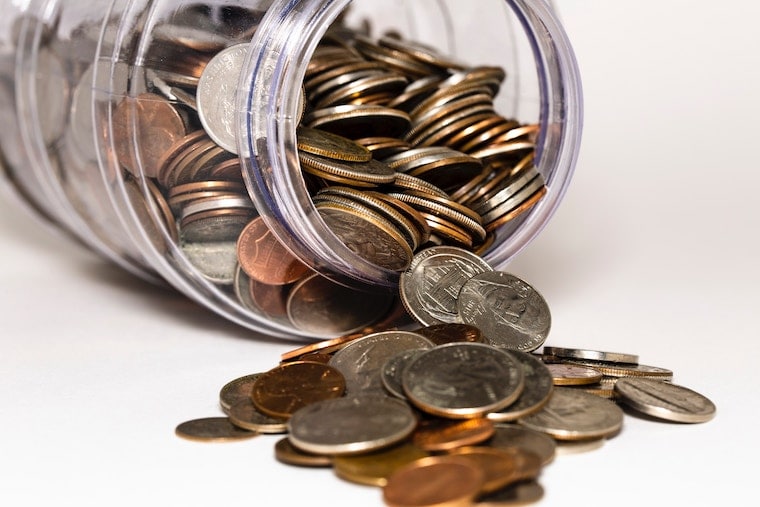
Cooking at home can be more affordable for many reasons. For example, you can buy food items that are on sale or use up ingredients you already have. Most recipes aren’t set in stone, so use up what you have in your refrigerator and pantry to make a delicious meal. Planning ahead by writing out a grocery list and weekly meals can save you a lot of money because you only buy ingredients you know you will use. When we visit the grocery store without any planning, we end up buying unnecessary ingredients or items we already had at home. A great app that can help you plan your meals and keep an inventory of items in your home is called Out of Milk. Another way to save is to use lower-cost, yet high-quality, proteins such as beans and lentils. These protein power-houses are an excellent source of fibre and nutrients and can be swapped out for most meat products. Check out this post to learn more about beans and to find delicious recipes!
Mental Health
Home cooking has also been associated with increased mental health and well-being. In a 2016 longitudinal study in The Journal of Positive Psychology, the authors found that people who participate in everyday creative activities, which includes any day-to-day activity such as cooking, playing an instrument, or writing, are more likely to have a higher sense of well-being. The authors found that that when participants engaged in creative activities, they had psychological benefits while they performed the activity and also the day following. These activities can increase feelings of calmness and enthusiasm, meaning that cooking and baking should be viewed as a form of relaxation, not a burden. To top it off, the authors reported that increased well-being occurred regardless of skill and personality, meaning that anyone can benefit from participating in every day creativity.
Social Experience

Cooking can be a great way to connect with family and friends. Taking your child to the grocery store can be a great opportunity to allow them to pick out ingredients for a meal. In the kitchen, let them help with a step in the cooking process. This doesn’t have to be with just your family, grab a friend or two and make a meal together. Then, take the time to sit together and talk. This time has been connected to a variety of positive benefits, especially for youth. In a New Zealand cross-sectional study, 8,500 youth aged 13-17 years were asked to participate in a national health and well-being survey. The study found that youth that reported greater cooking skills and cooked more often had higher levels of family connectedness and personal well-being. With meal replacements, there is little room and time for socializing and connecting.
Eating as a Pleasurable Experience
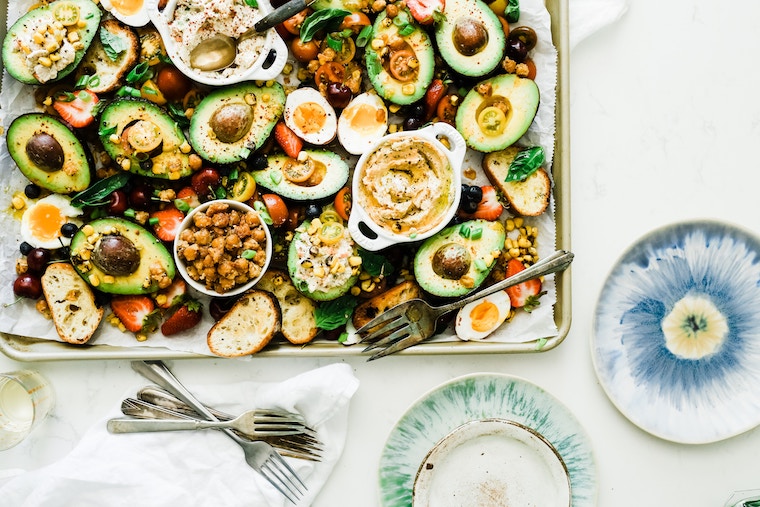
What about flavour? Don’t think I didn’t forget one of the best parts about food. Yes, eating out can be a delicious treat, but it isn’t always friendly on our wallets or our waistlines. Meal replacements, on the other hand, are almost guaranteed to limit the pleasurable experience of eating. What makes food special in almost every single culture and country in the world is the experience it brings. From the aroma of the ingredients blending together to the variety of textures of each bite, food is inherently a pleasurable experience. A meal replacement may be a quick solution to a busy morning, but replacing real food takes away the enjoyable experience that food brings us. Remember, we eat food not nutrients. It can be easy to vilify food for its role in weight gain and other health issues, but we need to remember that no single thing can be solely blamed for obesity, hence why there are so many different fad diets out there. When we take the time to enjoy the aroma and flavours of our food bite by bite, we are allowing time for our brains to tell us we’re full, which can help prevent overeating.
So now I ask you the question, would you rather drink your food, or eat delicious, healthy meals?
Need some inspiration to get started? Here are some recipes that you may want to try instead of a meal replacement drink. These provide you with about the same number of calories but more flavour and better nutrition. Get your creativity flowing with these delicious, easy to make, and nutritious recipes:
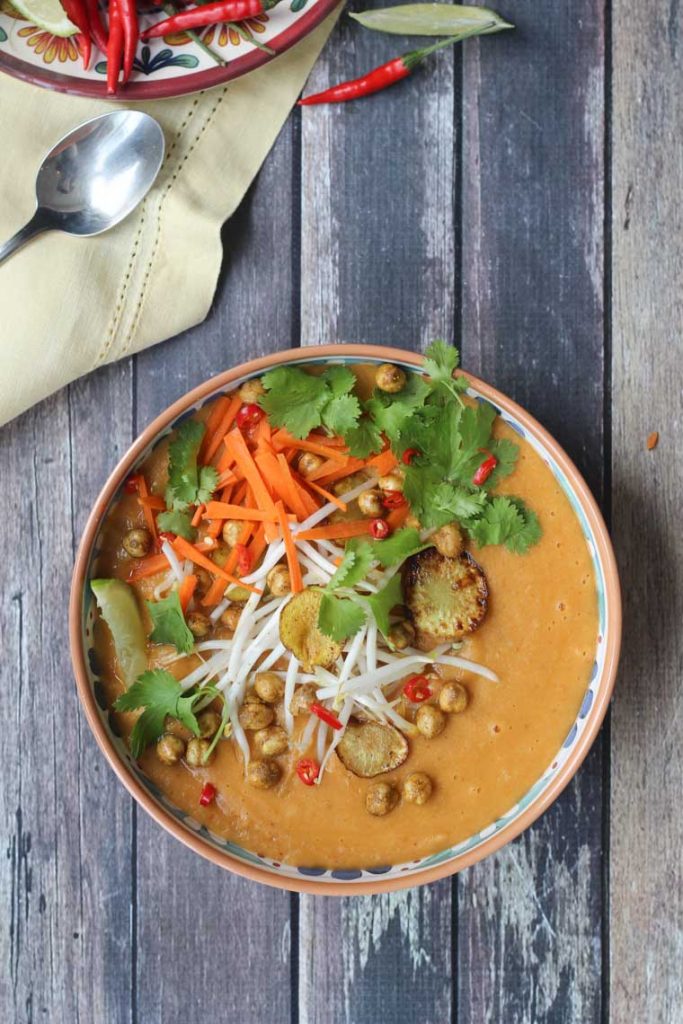
Vegan Curried Sunchoke and Chickpea Soup (300 calories per serving)
This fibre-rich recipe is a great for the cold weather. Chickpeas and sunchokes are both an excellent source of fibre which can help with gut regularity and helps to feed the healthy bacteria in our guts. You’re also getting an excellent source of protein. This delicious, creamy soup can be topped with whatever you want. Try adding some shredded carrots or bean sprouts for an extra dose of vegetables!

Port Braised Short Rib Pappardelle (420 calories per serving)
Looking for a delicious and hearty pasta dish? This recipe will have your taste buds thanking you. As mentioned earlier in this article, if you’re looking for an excellent source of protein and easily absorbed iron, short rib can get you this. Additionally, meat can provide you with an excellent source of a B-vitamins, in particular, vitamin B12. This recipe is also great for sneaking in an extra serving of vegetables. Add some carrots, celery, or mushrooms to get more nutrients and flavour!

Caprese Egg Cups (280 calories per cup)
Drinking your breakfast can be boring! Liven up your breakfast with this quick, delicious, protein-packed recipe. The whole-grain, fibre-rich wraps will provide you with the energy you need to get your day started with slow-released carbohydrates. Eggs are an excellent source of protein as well as vitamin B12 and vitamin D. Adding baby tomatoes and some spinach leaves are a great way to add a punch of flavour and nutrients.
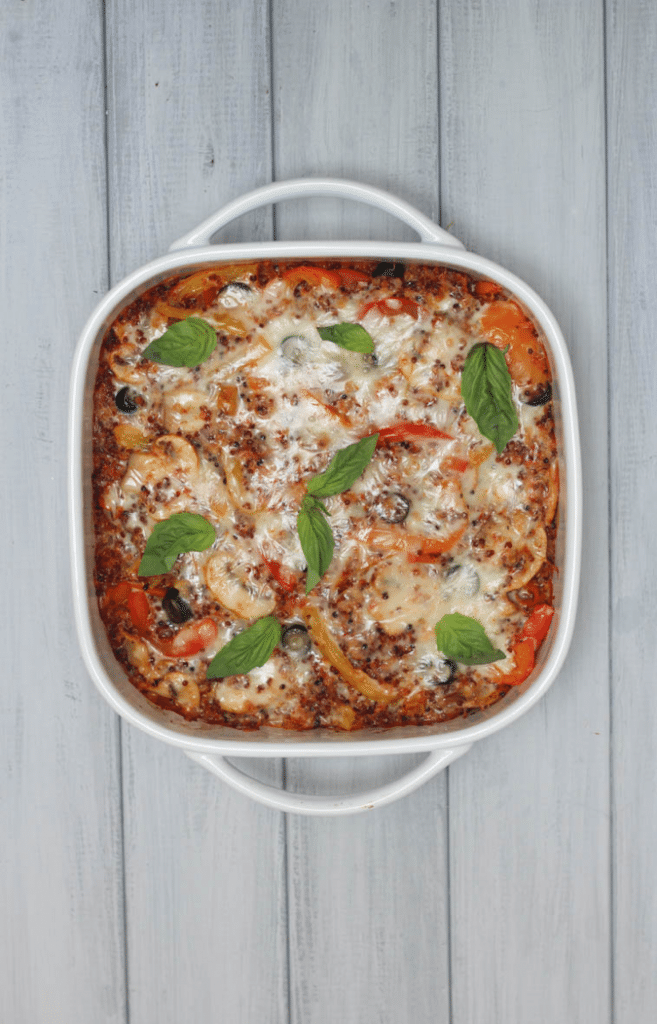
Gluten Free Vegetarian Pizza Quinoa Casserole (320 calories per serving)
Pizza? Who doesn’t love pizza? However, this power-packed recipe will have you rethinking your typical pizza. The quinoa in this recipe gives you a complete source of protein along with fibre, vitamins B1 and B6, and iron. It’s also gluten-free for those who cannot have or are avoiding gluten. This recipe is another great way to sneak in some vegetables mixed with ooey-gooey cheese. You can’t drink this!

Low Carb Gluten Free Shrimp Coconut Ginger Zucchini (320 calories per serving)
Zucchini noodles aren’t popular by mistake. They are full of fibre, protein, and antioxidants. Did I mention they are delicious? Pair this with edamame and shrimp, both complete proteins, for mix of delicate textures and flavour. Peppers are a great source of vitamin C (in fact, they have more than an orange!) and cabbage gives you a bit of crunch and an array of antioxidants. Mix all this with some ginger, garlic, and other spices and you have yourself a mouthwatering, healthy meal.

Paleo Chicken Curry One Pot Meal (409 calories per serving)
Tired of cleaning dishes? This one pot recipe will keep clean-up to a minimum. Chicken is an excellent source of lean protein, B vitamins, and iron. Sweet potatoes are high in fibre and antioxidants, such as beta-carotene, which can help with eye health and signs of aging. Cauliflower rice is a gluten-free, low-carb alternative to rice and is full of nutrients and fibre. Mix these with some other vegetables, spices, and tomato sauce for a hearty, quick family dinner.

Hummus Quesadilla with Pomegranate and Feta Cheese (420 calories per serving)
Pulses are so good for you. Not only are they a cost-effective way to get quality protein, they are also full of fibre, antioxidants, and vitamins & minerals. Hummus is a dip/spread that is made from chickpeas and makes a great filler in a quesadilla. The great thing about quesadillas is you can add pretty much whatever you want. In this recipe, pomegranates are a special guest. They provide a pop of flavour and mix well with feta cheese, red peppers, and spinach. Try this nutrient-packed recipe for lunch or dinner!
The bottom line on meal replacement drinks
When considering whether or not you want to try a meal replacement, it is important to remember that there is no such thing as a miracle cure. While these meal replacements can be a great way to get in a meal when you’re pressed for time, it is always best to eat real, wholesome food whenever you can to ensure you’re getting a variety of nutrients, fibre, and most importantly, flavour!
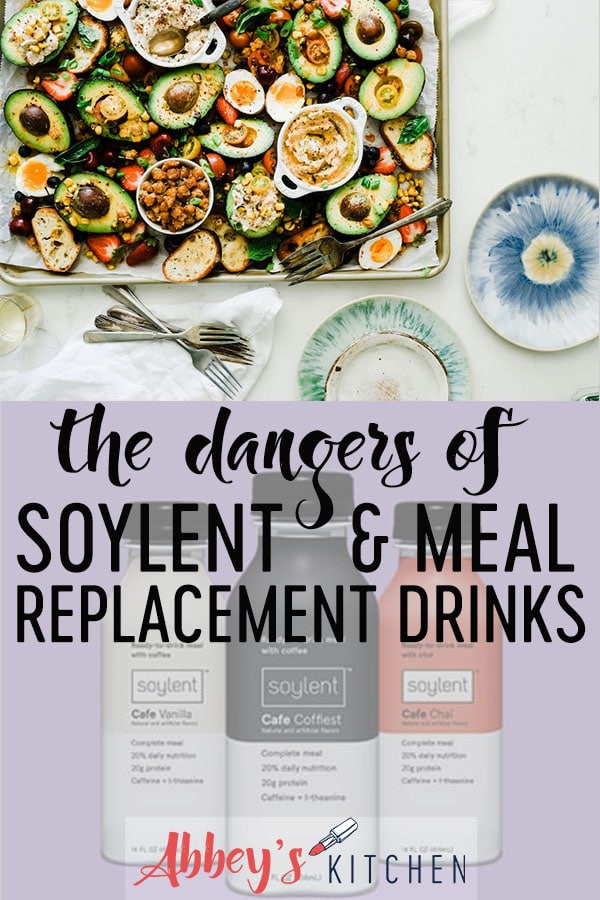
Contribution By:
RD2B Katey Davidson
Updated on October 4th, 2021

Abbey Sharp is a Registered Dietitian (RD), regulated by the Ontario College of Dietitians. She is a mom, YouTuber, Blogger, award winning cookbook author, media coach specializing in food and nutrition influencers, and a frequent contributor to national publications like Healthline and on national broadcast TV shows.

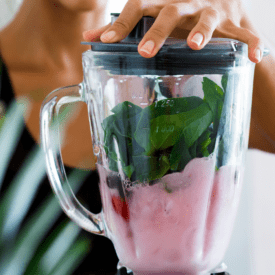

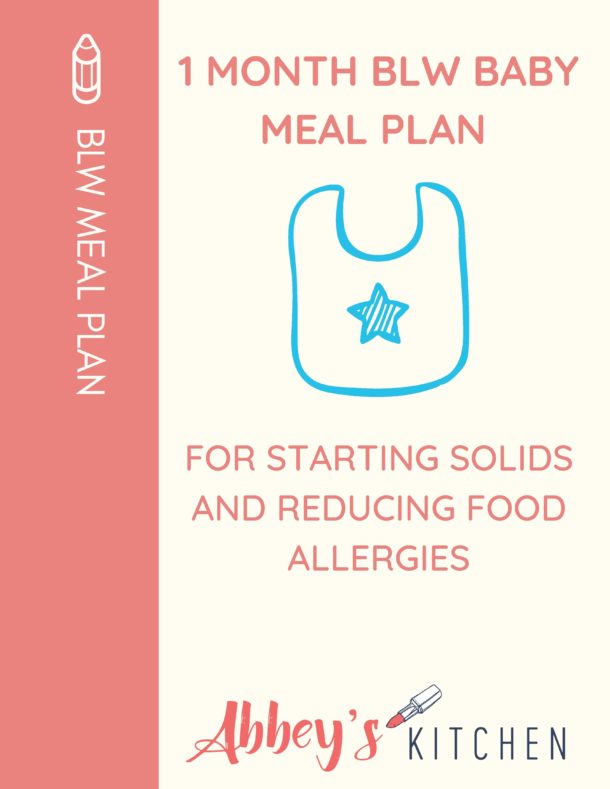
Rachel Frutkin says
I’m having a really hard time getting past the name “Soylent.” Did they purposely name it that knowing there was a film called Soylent Green? They had to…
Abbey Sharp says
lol no idea
Deborah Brooks says
You make some interesting points here. I am not a fan of meal replacement shakes in general as I don’t they are sustainable and people do not learn appropriate portion control
Abbey Sharp says
Yup, agree.
Farrah says
Great post, as always! I have a few patients who’ll sometimes go on juice cleanses and detox diets and meal replacement shakes and I gotta remind them of the fiber (or almost-lack thereof) too. Lots of my more elderly patients (or those with developmental disabilities) are on Ensure as a supplement, but like you said, they’re great for when you’re in a rush–not so much as an actual everyday replacement though!
Abbey Sharp says
Yes totally. Thanks Farrah